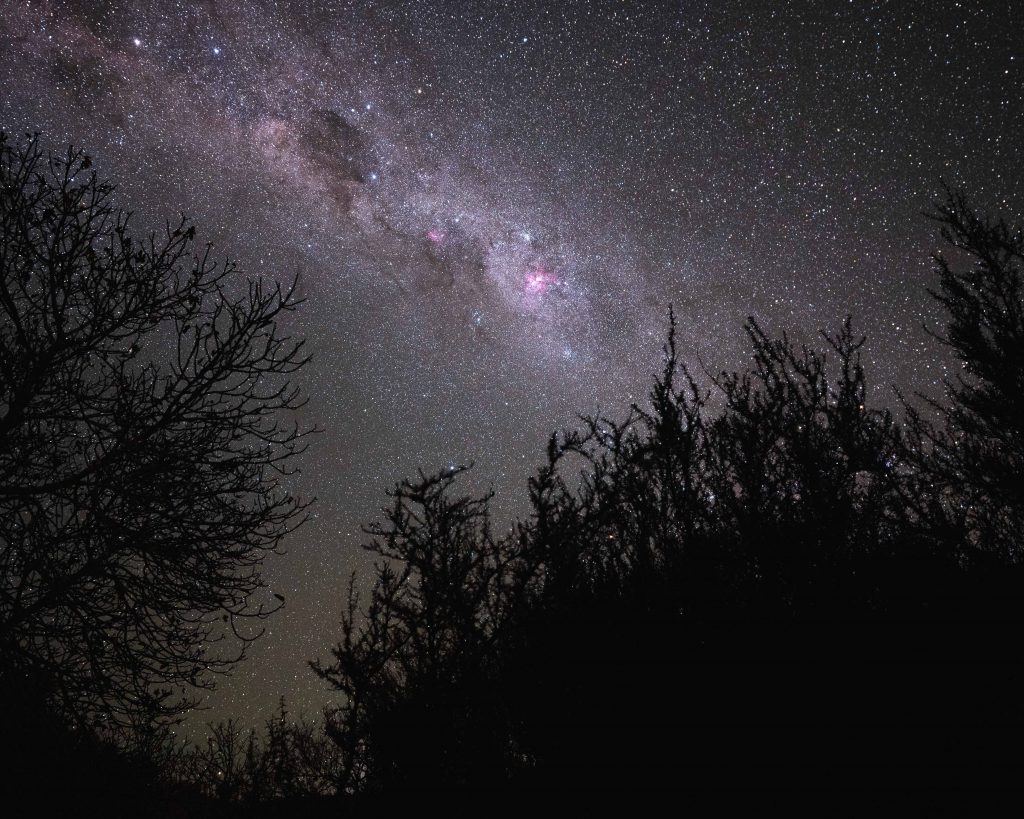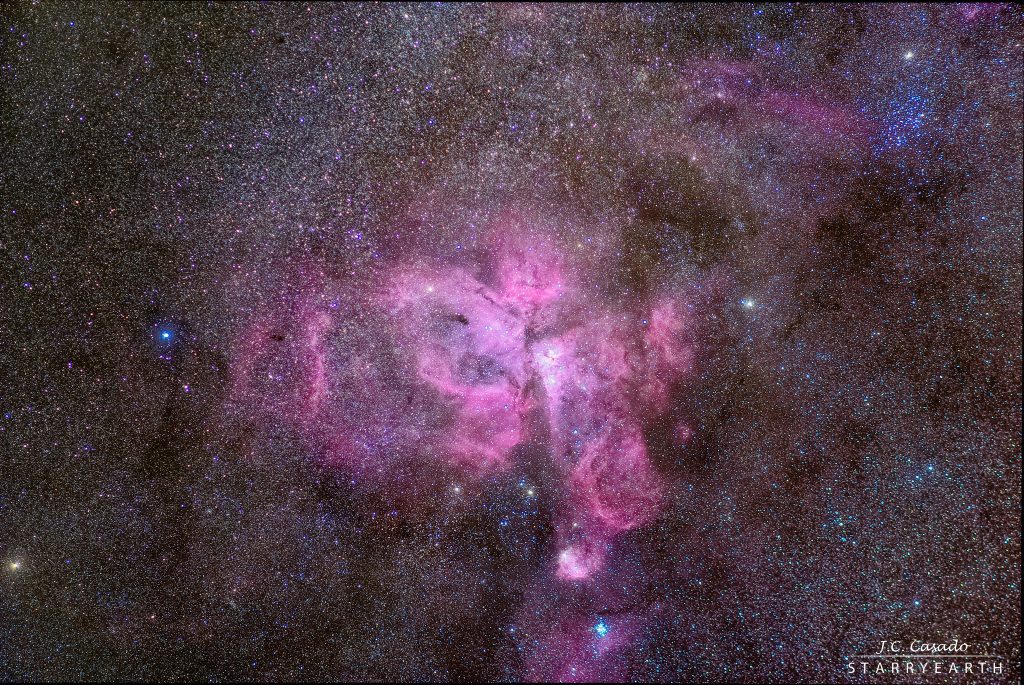
The Eta Carinae Nebula, the jewel of the southern-hemisphere constellation Carina, the Keel, is the most spectacular example of an active star factory in all the heavens. The nebula is about 260 light years across, some seven times larger than the Orion Nebula. And while 7,500 light years away, five times farther away than Orion, it’s still easily visible to the even the most casual stargazer as a large frosty patch three times as wide as the full Moon in the Milky Way west of the constellation Crux, the Southern Cross.
Like all emission nebulae, the Eta Carinae Nebula is powered by giant and supergiant stars shrouded within. The largest of these stars is the binary star η (eta) Carinae itself. Though it’s not directly visible without optical aid, astronomers estimate eta Carinae has a combined mass of 100 solar masses and luminosity of a million suns. Only a few dozen stars in the galaxy are as large and bright. With so much mass compressing and heating the core and furiously driving nuclear fusion, a star such as Eta Carinae burns its fuel quickly. The star is only a few million years old and is not expected to burn much longer before exploding once and for all in a tremendous supernova explosion which will light our skies in the day and night for many weeks. This event will occur soon, in the next few years, perhaps, or the next million years. It is as yet impossible to know precisely.

Because of its great distance and dusty shroud, the star Eta Carinae currently lies just on edge of visibility to an observer without optical aid. But the star has brigthened dramatically in the past. In the early 1800’s, the star flared up until by 1843 it was the second brightest star in the sky except for Sirius for nearly 20 years. This remarkable brightening of the star is sometimes called the “Great Eruption”. Astronomers at the time recorded the variation in brightness and color of Eta Carinae, and made a few drawings. But the key tools of photography and spectroscopy were still decades in the future so the physical nature of the outburst remains unexplained. Eta Carinae slowly faded again and became impossible to see without a pair of binoculars in the late 1960s. It has since brightened slightly.
The “Great Eruption” of Eta Carinae produced a bi-lobed emission nebula around the star. This feature, known as the Homonculus Nebula, is embedded within the greater Eta Carinae Nebula and is visible with a small to mid-sized telescope as a bright orange star near the center of the nebula.
The Carina Nebula is also home to two open clusters of stars and a fascinating range of structure. Dark lanes of interstellar dust adjacent to the star Eta Carinae give the center of the nebula a keyhole shape, so the nebula is often called the Keyhole Nebula. Detailed images with the Hubble Space Telescope show evaporating gaseous globules (EGGs) where new stars may be forming, as well as “bow shocks” around stars facing Eta Carinae that are probably a result of the “Great Eruption”.

The nebula spans a big patch of sky so only wide-field telescopes can fit the entire nebula into the field of view. Upon observing it with a 10″ Dobsonian and a 40mm eyepiece, the nebula still overfilled the 2.3º field of view. It revealed a well-structured group of four bright patches and dark lanes, along with embedded star clusters. The size and complexity of the nebula invite frequent inspection, and a single night of observation does not do justice to this awesome star-forming region. The nebula doesn’t have as pleasing a shape as the Orion Nebula or the Lagoon Nebula, but its sheer size and complexity renders it truly spectacular. With the same telescope at 257x, I also spotted the Homonculus Nebula which was concentric with the main star and showed a high surface brightness. I also spotted this little nebula in a 20″ Dobsonian at 427x which revealed more intricate structure and dark notches. A truly memorable sight!
Share This: